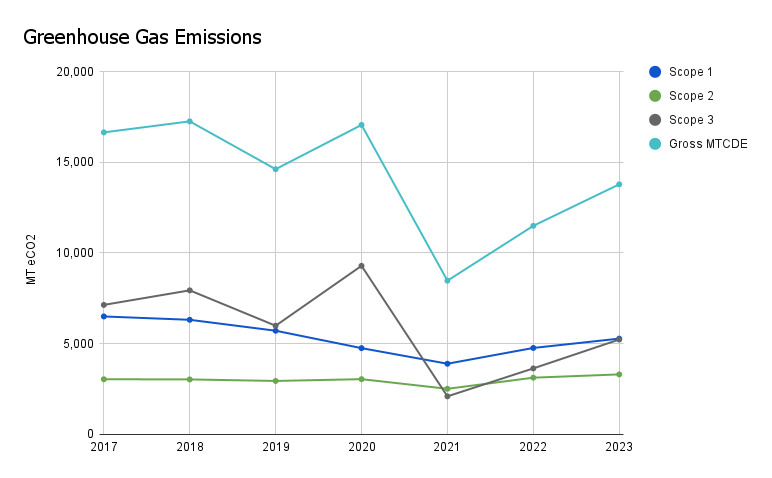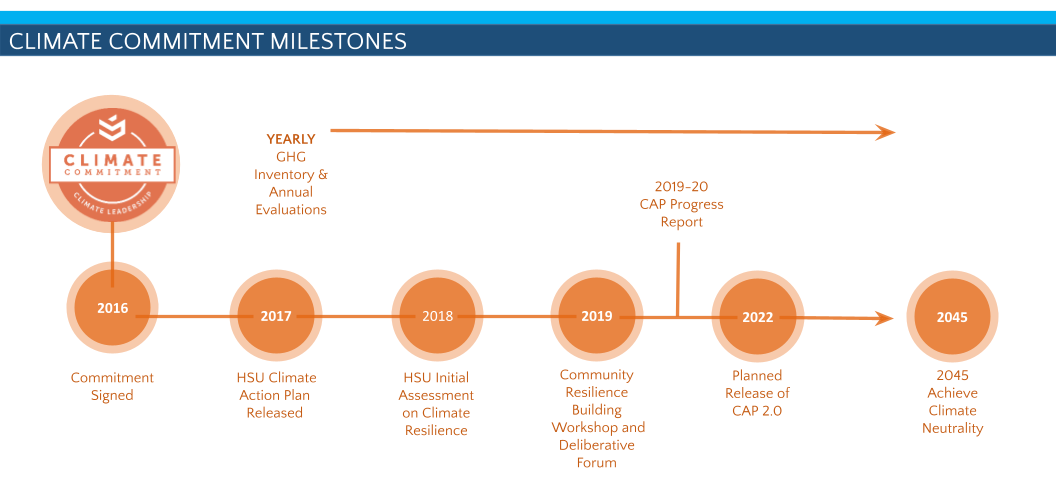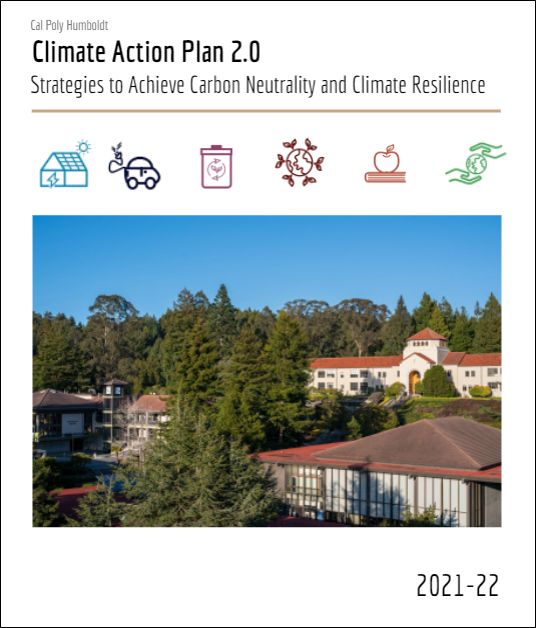Climate Action Planning
Anouncing the Climate Action Plan 2.0!
As an update to the initial plan, the Climate Action Plan 2.0 provides a roadmap for further drawing down greenhouse gas emissions. It combines reduction strategies and renewable energy generation with efforts to sequester carbon and offset GHG emissions to achieve carbon neutrality by 2045. The plan also lays out actions to foster equity and the integration of sustainability and climate action into all facets of the university. Additionally, CAP 2.0 includes strategies to ensure the campus can withstand and recover rapidly from climate change driven disruptions. Watch this short video on the CAP 2.0!

Our Carbon Footprint
The Office of Sustainability tracks Cal Poly Humboldt’s greenhouse gas emissions in metric tons of carbon dioxide equivalent, or MTCDE. Go to the Sustainability Dashboard to track our progress towards meeting GHG, energy, waste reduction and other sustainability goals.

Scope 1 are direct emissions from the combustion of fossil fuels by the university, including natural gas, diesel, biodiesel, gasoline and propane. Scope 2 emissions are from the electricity consumed by the university. Scope three are related emissions from commuting, university financed travel, solid waste and fuel+energy related activities.
Our Ongoing Climate Commitment
Humboldt signed onto the Second Nature Climate Commitment in 2016, setting us on a course to curtail greenhouse gas emissions from campus buildings, operations and related activities, and to integrate climate adaptation into campus planning. A year later we released the Climate Action Plan (CAP 1.0), with the goal of reducing facility and fleet greenhouse gas emissions to 1990 levels by 2020. We achieved that goal (see the 2019-20 CAP Progress Report) and have continued to meet resilience milestones along the Climate Commitment timeline. With the release of the CAP 2.0, Cal Poly Humboldt is well on its way towards achieving its commitments.

Nitrogen Footprint
Cal Poly Humboldt is also paying attention to its nitrogen footprint – the total amount of reactive nitrogen released to the environment as a result of resource consumption. Nitrogen is necessary in some form for all species on earth – however, when emitted in high concentrations, nitrogen can be a pollutant, causing smog, acid rain, dead zones, and other negative impacts to ecosystems and to human health. Fossil fuel combustion and food production are the two main ways nitrogen is released to the environment.
To learn more about nitrogen footprints, and to calculate your personal nitrogen footprint, go to www.n-print.org.
Got a climate action or climate adaptation strategy you want to share?
Please share your thoughts and ideas with us! Leave us a message on our online comment form and we'll respond as quickly as possible.
